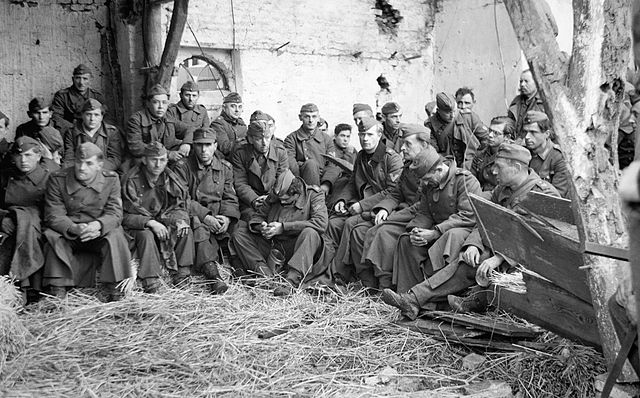Lodge Moor camp, Britain’s biggest World War Two prisoner of war camp, has been unearthed in South Yorkshire.
Archaeologists and archaeology students uncovered the forgotten camp near Sheffield and the Peak District National Park while conducting a research project, discovering its remains under moss and woodland.
The research was conducted by the University of Sheffield and the Sheffield Lakeland Landscape, and is believed to be the first of its kind.
An analysis of camp records, witness statements and remains revealed that Lodge Moor camp held more than 11,000 prisoners at its peak in 1944, including some of the most fanatical German, Italian and Ukrainian captives.
However, the camp’s most infamous prisoner, Admiral Karl Dönitz, was held on the site during World War One. Known at the time as ‘Prisoner of War Camp 17’, the site received Dönitz after Allied forces captured the U-boat captain when his vessel was forced to surface in October 1918.
Historians have revealed that the admiral spent around six weeks at the camp before he began feigning mental illness in a bid to avoid treatment as a war criminal. Dönitz was later sent back to Germany, where he ‘recovered’ and became the commander of Hitler’s U-boats and the leader of the German navy, before taking over from Hitler as president of the German Reich.

According to the research students working on the study, those who worked at the camp during WW2 initially had good relations with the locals, with many of the Italian captives going to work on local farms. However, the arrival of the German prisoners soured relations, changing the way the prisoners were treated.
“The prisoners were fed food out of galvanised dustbins, had to stand outside in the mud, rain and cold for several hours a day during roll call,” said archaeology student Rob Johnson, “and since it was so overpopulated as a transit camp, they were squashed into tents or the barracks with little personal space.”
The study revealed that the International Committee for the Red Cross had held an investigation into the conditions at the camp in 1944, describing them as “uninhabitable”. A witness testimony even revealed that there were more than double the official number of 30 people per barrack.
Lodge Moor camp, like many other PoW camps, was also found to have been the site of great drama during the wars. On 20 December 1944, for example, a group of German prisoners managed to escape the site, but were captured just 24 hours later in Rotherham.
The students are continuing their work on the study, stating that they hope their findings will be used as justification for the future preservation and restoration of the site. Archaeology Georgina Goodison said: “It was a big eye opener for me, as I didn’t realise that Lodge Moor camp even exists. The woodland hides it well. It hides the secrets of all the thousands of men who were housed there merely decades ago.”
